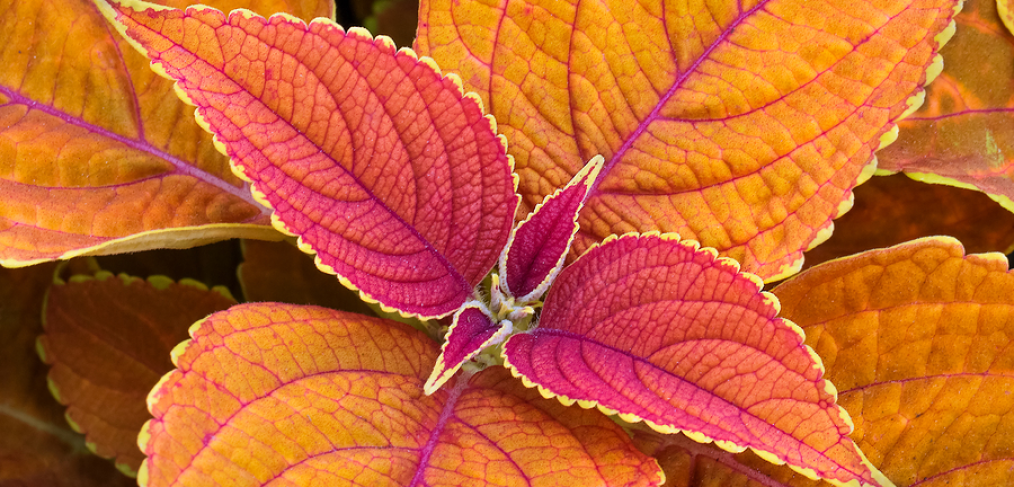
Coleus – Tips on Growing Beautiful Coleus Plants Indoors or Out
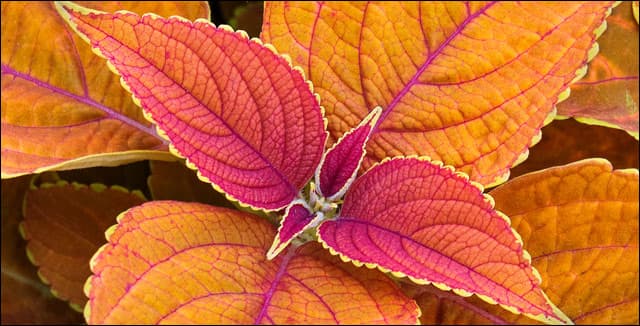
Coleus is a tropical perennial plant that grows easily in containers or in landscapes. With approximately 60 different species, coleus comes in a variety of colors including green, purple, orange, and yellow.
Grown mainly for its foliage, this hardy plant is easy to care for and propagate.
Foliage is in
Trends for plants and flowers change all the time. It’s not that plants fall out of favor so much as that people tend to gravitate toward and promote a plant and make it popular.
It is never been easier to follow plant trends than it is now on social media, and the generation just now in its young adult years – the millennials – are famous for their house plant love. Take a look around on Instagram, and you will see a few indoor jungles.
Flowers will always be adored. However, right now plants with gorgeous leaves are coveted. Snake plants, Fiddle Leaf Fig trees, Monstera, and the plants we’ve covered in this series make up just a few of those most-sought-after.
Coleus makes a perfect addition to the group; you can genuinely grow this plant indoors or out, and its color can brighten your home all through the winter months.
Coleus History
Plectranthus scutellarioides are tropical flowering plants in the Lamiaceae family. It’s the same family as mint or deadnettle.
Not true nettles, which are in a different family, they are also called painted nettles. In nature, they are found in the tropical regions of Southeast Asia, India, Australia, and Africa. Indonesia and Sri Lanka host the largest coleus populations. Traders and botanists brought this plant with them to Europe and America.
About the Coleus
Coleus grows up to 30 inches tall and is a woody evergreen perennial, hardy only in US zones 10-11.
If you are lucky enough to live in one of these regions, your coleus can survive outside for a long time if you take care to prune appropriately, and as long as temperatures don’t dip below 60 degrees at night.
Indoors, coleus makes the ideal houseplant, and with pruning will last many years. If you don’t have enough light for some of the sun-loving varieties, you may need to invest in a grow light.
Selection
Coleus is part of the mint family. If you know anything about mint, you know it’s a fantastic grower. It will take over your garden if you aren’t extremely careful!
Coleus breeders are breeding new plant varieties for their distinct color combinations, to be more prolific branchers, for growth habits such as compact or trailing growth, delayed flowering and sun or shade tolerance.
The result is that you can find a coleus for just about any situation in the house or garden you want.
Golden coleus, also called Sedona, is a light bronze color and is part of the ColorBlaze series, which loves the shade and partial sun. It makes an excellent indoor plant for this reason.
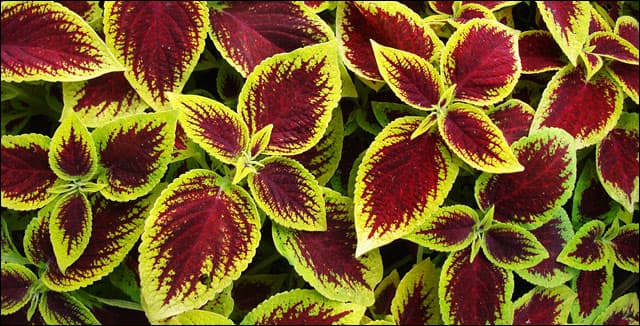
Other series in the shade lover variety include:
- Superfine Rainbow
- Kong
- Fairway
- Main Street
For your outdoor gardening, or a very sunny corner of the house, you can look for plants in these series:
- Versa
- Wizard
- Stained Glassworks
- Marquee
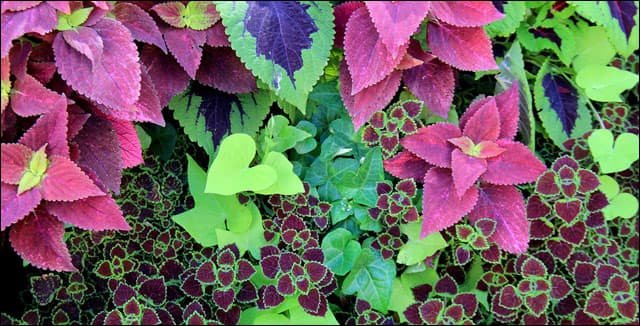
Many Colors of Coleus
All you have to do is an image search or explore Instagram for coleus images, and you will see some of the most beautiful foliage on earth.
There is a wide array of variability in patterns and colors out there to choose from: solid colors leaves with splashes, streaks, and flecks of color, and leaves with margins or veins of contrasting colors.
The intensity of the leaves brightens if you make sure they get the right amount of sun and shade. Darker leaves can tolerate more sun, while the lighter ones need shade or they will scorch.
The texture of the leaves varies as well from leaves as large as your face – the Kong coleus – to very small. Leaves can be scalloped, lobed, finger-shaped, duck’s foot shaped and twisted.
Coleus has been bred to for many shapes as well: mounded, upright and trailing, so they can make excellent border plants for large planters or hanging baskets. However, they can also be pinched back to help encourage the shape you desire.
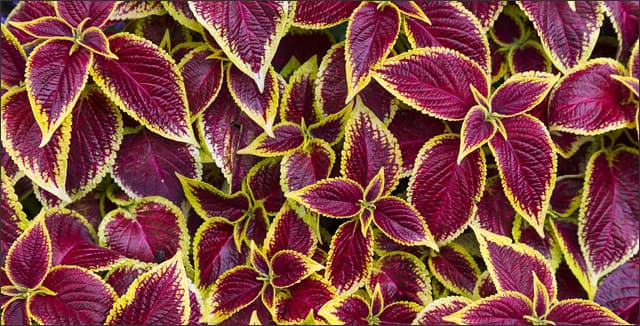
Caring For Your Coleus
The consensus about coleus care seems to be that they prefer morning sun and afternoon dappled shade. This will help them achieve their most saturated colors and most robust stems while keeping them safe from scorching.
The sun-tolerant varieties need to have enough moisture so as not to dry out. However, overly damp soil will encourage rot.
Plant your coleus plant when temperatures are consistently above 60 degrees overnight, and any danger of frost has passed.
Container plants should be fed with fertilizer to keep them healthy.
Maintaining your coleus plant’s shape is essential, as a plant which has flowered and gone to seed will soon die.
Coleus plants will put energy into their flower production rather than leaves if you allow the flowers to stay. Be sure to pinch back the plants right above a set of leaves or a branching every few weeks to prevent flowers.
Coleus Propagation
It is relatively easy to start a coleus plant from seeds. Sow them indoors about the same time you would start a vegetable garden – 8-12 weeks before the last frost date. They need light to germinate.
You can also bring your coleus inside where they need to get temperatures around 70 degrees.
Keep rotating and pinching back as necessary. Grow lights may be required.
In addition, make sure your pots can freely drain and that you are regularly fertilizing your indoor coleus. They are thirsty, so any potted coleus needs to be monitored for moisture regularly.
Takeaway
Exotic-looking plants are trendy right now as house plants and in gardens. Your coleus plant, whether the Sedona variety or one of the other many dazzling colors, is sure to bring color to your world all through the year.
Over to You
Do you have a favorite variety of coleus? Please share your favorite in the comments below.



